Provided by CPOA Legal Counsel James R. Touchstone, Esq., Jones & Mayer
In an 8-1 decision, in Kansas v. Glover,1 the Supreme Court of the United States held that when an officer lacks information negating an inference that the owner is driving the vehicle, an investigative traffic stop made after running a vehicle’s license plate and learning that the registered owner’s driver’s license has been revoked is reasonable under the Fourth Amendment. In reaching its conclusion, the Court determined that a deputy’s commonsense inference that the owner of the vehicle was likely the vehicle’s driver provided more than reasonable suspicion to initiate the stop.
Background
In April 2016, Douglas County Kansas Sheriffs’ Office Deputy Mark Mehrer was on routine patrol in Douglas County when he observed a 1995 Chevrolet 1500 pickup truck with a Kansas license plate. Deputy Mehrer ran the license plate number through the Kansas Department of Revenue’s file service. The registration came back to a 1995 Chevrolet 1500 pickup truck and the files indicated the truck was registered to Charles Glover Jr. (“Glover”). The files also indicated that Glover had a revoked driver’s license in the State of Kansas. Deputy Mehrer assumed that the registered owner of the truck, Glover, was also the driver. Deputy Mehrer did not observe any traffic infractions and did not attempt to identify the driver of the truck up until this point. Based solely on the information that the registered owner of the truck had his driver’s license revoked, Deputy Mehrer initiated a traffic stop. Glover was in fact identified as the driver of t he truck.
Kansas charged Glover with driving as a habitual violator. Glover filed a motion to suppress all evidence seized during the stop, claiming that the Deputy lacked reasonable suspicion to conduct the traffic stop. The District Court granted the motion. The Court of Appeals reversed, concluding that it was reasonable for Deputy Mehrer to infer that the driver was the owner of the vehicle because “there were specific and articulable facts from which the officer’s common-sense inference gave rise to a reasonable suspicion.”
The Kansas Supreme Court then reversed the decision of the Court of Appeals. The Kansas Supreme Court held that, absent reasonable suspicion of criminal activity, Deputy Mehrer violated the Fourth Amendment by stopping Glover. According to the court, Deputy Mehrer did not have reasonable suspicion to conduct the traffic stop because his inference that Glover was behind the wheel amounted to “only a hunch” that Glover was engaging in criminal activity.2 The Kansas Supreme Court explained that Deputy Mehrer’s “hunch” involved “applying and stacking unstated assumptions that are unreasonable without further factual basis,” namely, that “the registered owner was likely the primary driver of the vehicle” and that “the owner will likely disregard the suspension or revocation order and continue to drive.”3 The United States Supreme Court granted Kansas’ petition for a writ of certiorar i.
Discussion
Majority Opinion
The United States Supreme Court noted that it had previously recognized that States have a “vital interest in ensuring that only those qualified to do so are permitted to operate motor vehicles [and] that licensing, registration, and vehicle inspection requirements are being observed.” Delaware v. Prouse, 440 U. S. 648, 658 (1979). The Court explained that under its precedents, the Fourth Amendment permits an officer to initiate a brief investigative traffic stop when he has “a particularized and objective basis for suspecting the particular person stopped of criminal activity.” United States v. Cortez, 449 U. S. 411, 417-418 (1981). “Although a mere ‘hunch’ does not create reasonable suspicion, the level of suspicion the standard requires is … obviously less than is necessary for probable cause.” Prado Navarette v. California, 572 U. S. 393, 397 (2014) (quotation altered). The Court stated that the standard “depends on the factual and practical considerations of everyday life on which reasonable and prudent men, not legal technicians, act.” Ibid., at 402 (quoting Ornelas v. United States, 517 U. S. 690, 695 (1996) (internal quotation marks omitted)). Courts must permit officers to make “commonsense judgments and inferences about human behavior.” Illinois v. Wardlow, 528 U. S. 119, 125 (2000).
The Court then considered whether the facts known to Deputy Mehrer at the time of the stop gave rise to reasonable suspicion. The Court noted that before initiating the stop, Deputy Mehrer observed an individual operating a 1995 Chevrolet 1500 pickup truck with a specific Kansas license plate number. He also knew that the registered owner of the truck had a revoked license and that the model of the truck noted in the records matched the observed vehicle. The Court concluded that from these three facts, Deputy Mehrer drew the commonsense inference that Glover was likely the driver of the vehicle, which provided more than reasonable suspicion to initiate the stop.
The Court added that the fact that the registered owner of a vehicle is not always the driver of the vehicle did not negate the reasonableness of Deputy Mehrer’s inference. The Court explained that the reasonable suspicion inquiry “falls considerably short” of 51% accuracy,4 because “[t]o be reasonable is not to be perfect.” (Heien v. North Carolina, 574 U. S. 54, 60 (2014).)
The Court declared that although common sense sufficed to justify Deputy Mehrer’s inference, empirical studies demonstrated that drivers with suspended or revoked licenses frequently continued to drive.5 Moreover, Kansas’ license-revocation scheme, which covered drivers who had already demonstrated a disregard for the law or were categorically unfit to drive, reinforced the reasonableness of the inference that an individual with a revoked license would continue to drive. The Court thus found that the concerns motivating the State’s various grounds for revocation lent further weight to the inference that a registered owner with a revoked Kansas driver’s license might be the one driving the vehicle.
The Supreme Court found Glover’s counterarguments unpersuasive. Glover argued that Deputy Mehrer’s inference was unreasonable because it was not grounded in his law enforcement training or experience. The Court considered such a requirement to be inconsistent with the Court’s Fourth Amendment jurisprudence. Such a requirement would also place the burden on police officers to justify their inferences by referring to training materials or experience, and it would foreclose their ability to rely on common sense obtained outside of their work duties. The Court also rejected Glover’s argument that Kansas’ view would permit officers to base reasonable suspicion exclusively on probabilities. The Court explained that officers, like jurors, could rely on probabilities in the reasonable suspicion context.6 Moreover, the Court found that Deputy Mehrer here did more than simply rely on probabilities in deciding t o make a stop: He combined facts obtained from a database and commonsense judgments to form a reasonable suspicion that a specific individual was potentially engaged in specific criminal activity.
The Court emphasized that the scope of its holding here was narrow. The Court explained that the reasonable suspicion standard takes into account the totality of the circumstances, and that the presence of additional facts might have dispelled reasonable suspicion. However, here, the deputy possessed no information sufficient to rebut the reasonable inference that Glover was driving his own truck. Thus, the Court concluded that under the totality of the circumstances observed by Deputy Mehrer, he drew an entirely reasonable inference that Glover was driving while his license was revoked. Accordingly, the United States Supreme Court reversed the judgment of the Kansas Supreme Court, and remanded.
Concurring Opinion
In Justice Kagan’s concurring opinion, in which she was joined by Justice Ginsburg, she considered the facts to be uniquely “barebones” and the record relatively incomplete. The concurring justices joined the majority opinion holding that Deputy Mehrer had reasonable suspicion to stop the truck because of the critical fact that Mehrer learned from a state database that Glover, the truck’s owner, had had his license revoked under Kansas law. Because Kansas almost never revoked a license except for serious or repeated driving offenses, a person with a revoked license had already shown a willingness to flout driving restrictions. That fact provided a reason to infer that such a person would drive without a license—at least often enough to warrant an investigatory stop.
The concurring justices found nothing else in the record here to call that inference into question. However, had Kansas merely suspended rather than revoked Glover’s license, and that suspension was for matters completely unrelated to road safety (such as for parking tickets, court fees, or child support) as is common for other States, the majority’s reason for thinking that someone with a revoked license would keep driving – that he has a history of disregarding driving rules—would no longer apply. For the concurring justices, such a scenario would render any common sense invoked in the altered context as not much different than a mere hunch—and therefore not create reasonable suspicion.
Dissenting Opinion
Justice Sotomayor dissented. She disagreed with the majority’s view that seizing Glover’s vehicle was constitutional because drivers with revoked licenses (as opposed to suspended licenses) in Kansas had already demonstrated a disregard for the law or are categorically unfit to drive. Justice Sotomayor found nothing to indicate that Deputy Mehrer had any informed belief about the propensity of unlicensed drivers to operate motor vehicles in the area—much less that he relied on such a belief in seizing Glover. Instead, the majority relied on “common sense” to fill the gap in the factual record to support the deputy’s purported inference that unlicensed drivers routinely continue driving. Justice Sotomayor explained that the consequence of the majority’s approach was to absolve officers from any responsibility to investigate the identity of a driver where feasible, and effectively permitted officers to make a stop based merely on a guess or hunch about the driver’s identity. The dissent found the majority’s approach “paved the road to finding reasonable suspicion based on nothing more than a demographic profile.”
HOW THIS AFFECTS YOUR AGENCY
The Supreme Court majority emphasized that its decision here was narrow in scope and based on the limited facts here and that “the presence of additional facts might dispel reasonable suspicion.” Accordingly, if Deputy Mehrer had observed a female driver of the truck prior to pulling the vehicle over, such a fact likely would have dispelled reasonable suspicion to conduct the traffic stop, as there would have been an additional fact indicative that Glover was not the driver of the vehicle. Agencies should also note that the facts in the record were very limited. Neither Glover nor Deputy Mehrer testified at the suppression hearing. Instead both stipulated to a sparse seven facts that comprise the record in this case.
In sum, the “totality of the circumstances” remains the fundamental aspect of Fourth Amendment jurisprudence. These circumstances can be based upon common sense, outside a law enforcement officer’s training. As the Court noted, “[n]othing in our Fourth Amendment precedent supports the notion that, in determining whether reasonable suspicion exists, an officer can draft inferences based on knowledge gained only through law enforcement training and experience.” The Court further observed, “[w]e have repeatedly recognized the opposite.”
As always, if you wish to discuss this matter in greater detail, please feel free to contact James Touchstone at (714) 446–1400 or via email at jrt@jones-mayer.com.
Information on www.jones-mayer.com is for general use and is not legal advice. The mailing of this Client Alert Memorandum is not intended to create, and receipt of it does not constitute, an attorney-client-relationship
Citations:
- 2020 U.S. LEXIS 2178 (Apr. 6, 2020).
- 308 Kan. 590, 591, 422 P. 3d 64, 66 (2018).
- Id., at 595-597, 422 P. 3d, at 68-70.
- See United States v. Arvizu, 534 U. S. 266, 274 (2002).
- See, e.g., 2 T. Neuman et al., National Coop. Hwy. Research Program Report 500: A Guide for Addressing Collisions Involving Unlicensed Drivers and Drivers With Suspended or Revoked Licenses, p. III-1 (2003) (noting that 75% of drivers with suspended or revoked licenses continue to drive).
- See, e.g., United States v. Sokolow, 490 U. S. 1, 8-9 (1989).


